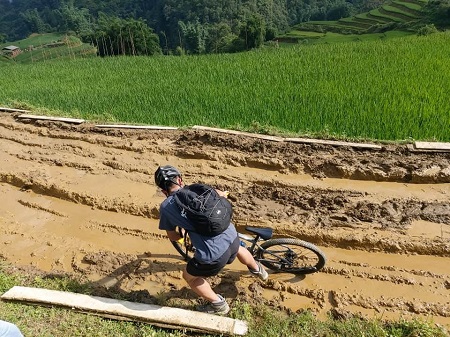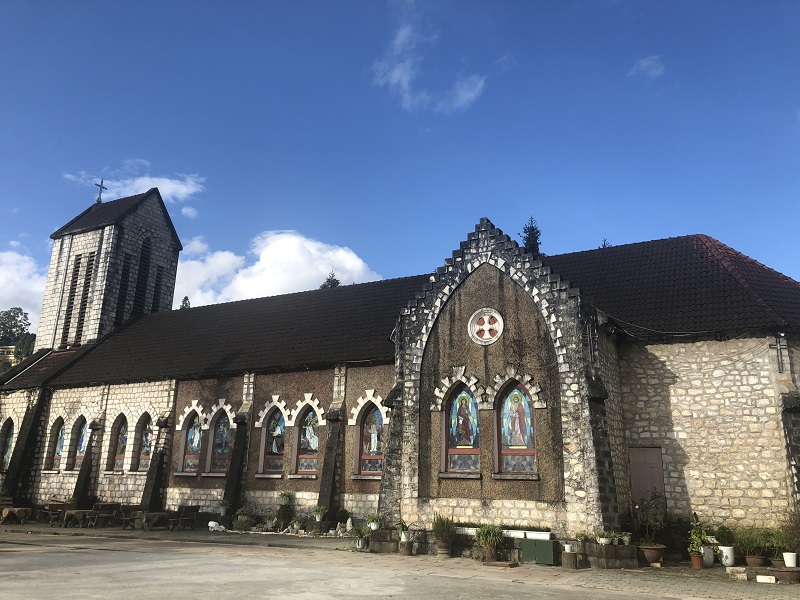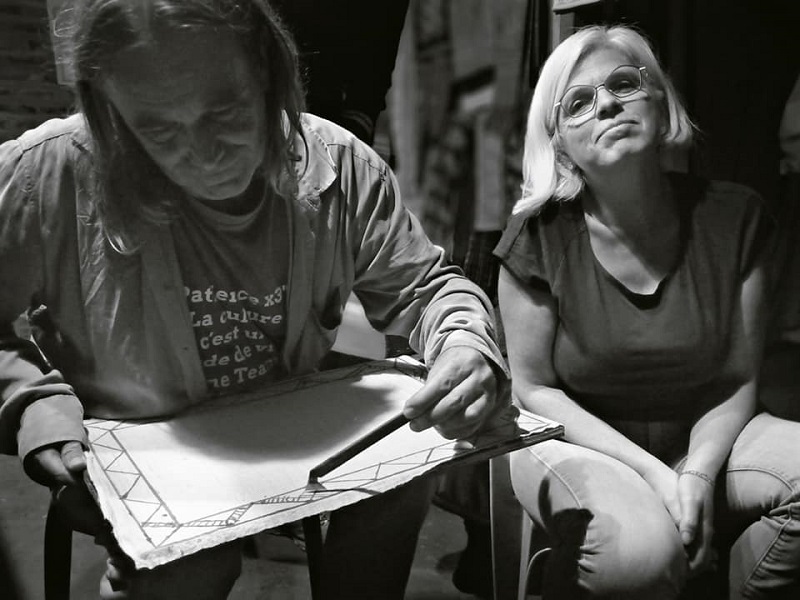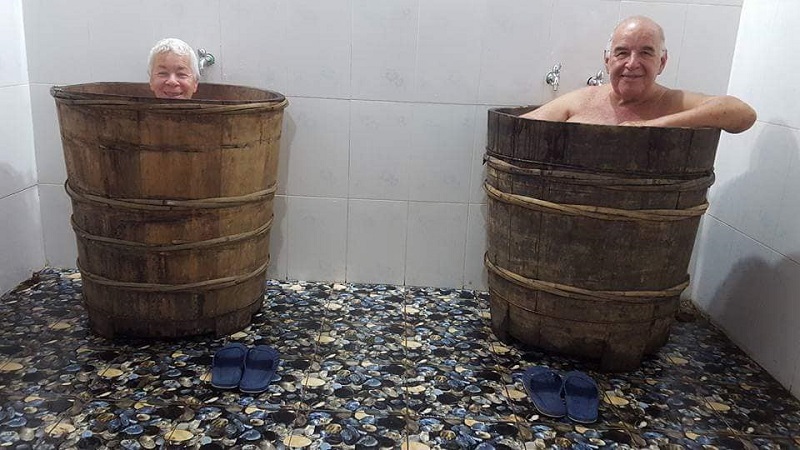- You are here:
- Home »
- Tours & Activities »
- The Best Things To Do In Sapa On Rainy Days

The Best Things To Do In Sapa On Rainy Days
Located in the mountainous area in Northern Vietnam, the weather in Sapa changes rapidly. The dry season in Sapa lasts for three months from October to April. Specifically, the winter weather is quite cold from December and goes all the way to the end of February of the next year. The period from June to September is the rainy season, which is inconvenient to outdoor activities in Sapa.
Known as “the Tonkinese Alps”, Sapa is a beautiful small town in Lao Cai Province which is home to diverse Vietnamese ethnic minorities. From the lush mountainous areas to golden rice fields to the unique culture of ethnic tribal groups, you will marvel at the stunning beauty of Sapa’s culture and ethnic people at each season.
Travel to Sapa in the rain, you can admire the awe-inspiring beauties of Sapa. It sounds weird but worth a try! Here is a list of 5 interesting things to do you can experience in Sapa when raining.
However, a rainy day is perfect for you to refresh yourself and experience some indoor activities in Sapa. Do not forget to take a shot of majestic moments of terraced rice field or mist-covered Hoang Lien Son mountain ranges on the rainy day. Furthermore, it is a good chance to learn about the culture of local tribes-people
1. Learning the culture of ethnic minorities in Sapa culture museum
Every corner of Sapa town is covered with the colorful culture of ethnic minorities. There are five main ethnic groups in Sapa that are the Mong, Dao, Tay, Giay and Xa Pho. The majority of Sapa inhabitants are the Black Mong people with their distinctive traditional costumes. You can take your time to the Sapa Culture Museum (inside Tourist Information Center-02 Fansipan street) to get to know about the diverse cultural differences among ethnic tribe groups.
Before entering into the engaging exhibits, you will marvel at the attractive exterior of the stilt house. The Sapa Culture Museum offers the showcase of distinctive customs, traditions, cultures, and history of Sapa development. After that, there is a wide range of handicraft products, embroideries or clothes you can buy for your family and friends.
2. Buy some handicraft products in Sapa market
You can take a walk to get a deep understanding of the local daily life of local people. Go into Sapa market, you not only see the selling and buying activities but also join in the hub of Mong, Dao, Nung ethnic lives. There are many local markets active every day, but there are some only open once or twice a month. Do not miss the chance to enjoy local specialties and buy interesting Sapa souvenirs.

Sapa stone church, the symbol of Sapa tourism (To Uyen)
3. Admire the unique architecture of the Holy Rosary Church of Sapa
Coming to Sapa, you will be surprised by its French colonial architecture in Sapa buildings. Holy Rosary Church is a symbol of Sapa town built during the history of the French colony. Established in 1895, the Sapa church is in the middle of the main square where local activities and other cultural performances happen on Saturday nights.
The whole church was constructed from the combination of sand, lime, and molasses with the total areas more than 6000m2. By the 1930s, there are more than 200 French buildings, running water, sewage systems, telephones, telegraph lines. After the bombing in 1952, many of the French villas were destroyed.
4. Enjoy the most tasty flavors in Sapa
In addition to the distinctive culture and majestic nature, you must savor the local food with traditional Hmong-style cuisine when coming to Sapa town. Appeared more than 200 years, horse meat soup is a traditional dish of the Mong people in Sapa. It is one of the most horrifying food because of its unpleasant smell and taste. You can challenge yourself with this “special” dish or relax with many delicious specialties such as bamboo-tube rice, free-range pig, dried buffalo meat.
Another food adventure in Sapa town you cannot miss is a wine from Assam apple that is made from the fermentation of Assam apple. It is a kind of apple harvested from Hong Lien Son Mountain from August to October. To experience this flavor, you can go to these places to enjoy your food experiences

The best view, great place for drink coffee and sigh-seeing (Thanh Tuan)
5. Drink your coffee at the cafe in the clouds
Sitting on the veranda of a hillside cafe, enjoying the splendid mountainous views is one of the must-try experiences in Sapa in the rain. With a majestic background of valleys and mountains, you can watch the fluffy white clouds moving slowly. Do not forget to take shots of the breathtaking scenery of nature hidden in the clouds.
It’s very easy to looking for any coffee shop in Sapa with special style, You can also try one of the most delicious coffee in the world with a wide range of beverages such as iced coconut coffee, coffee with condensed milk, and so on.
6. Participate in a Mong Sewing Class
Black Mong textiles is a precious treasure in Sapa due to their concentration on handmade items and natural dyes. They use embroidery primarily to make colorful clothes for the Mong New Year, which is called “flower cloth”. Many people said that Chinese people forbid Mong people to use their original, written language. Therefore, they sew the symbols into their clothes to create messages for their communication.
Embroidery often uses the traditional motifs associated with treasure chests with elephant feet, dragon tails, nature, and animals. This sewing class lasts for about one hour. An experienced Black Mong woman will give you an overview of the fabrics, threads, and symbology as well as the development of embroidery in the ancient times.

Draw beeswax at the local villages (Thanh Tuan)
7. Relax on the special bathing therapy of Red Dao ethnic
Coming to Sapa town, you have a chance to experience a special bathing therapy created by the Red Dao ethnic people. This traditional herbal water is extremely famous due to its healthy natural materials. Specifically, wild fokienia is one of the aromatic essential oil extraction that keeps your scent for a few days.

Visitor relaxing with herbal bath (Thanh Tuan)
A herbal bath has to use from 20 to 80 ingredients and boils for three hours. Maintaining bathing therapy every day is good for your health. It can reduce musculoskeletal pain, rheumatism, and treat some skin diseases. You can do it in Sapa town but for more experience, you can take a taxi to go Ta Phin village to have the best herbal bath.
Here are some choices to choose when you come to Sapa on rainy day.
To Uyen
About the Author Sapa Tourism Office
Popular posts

